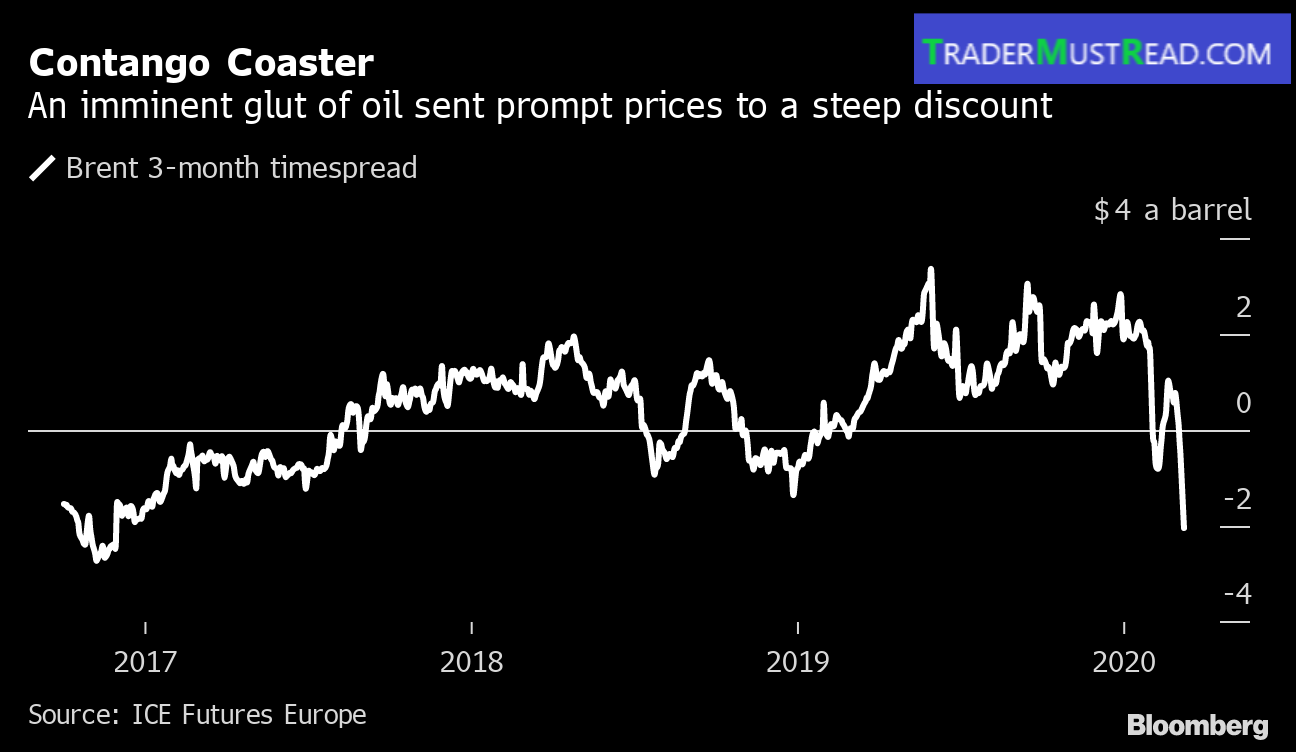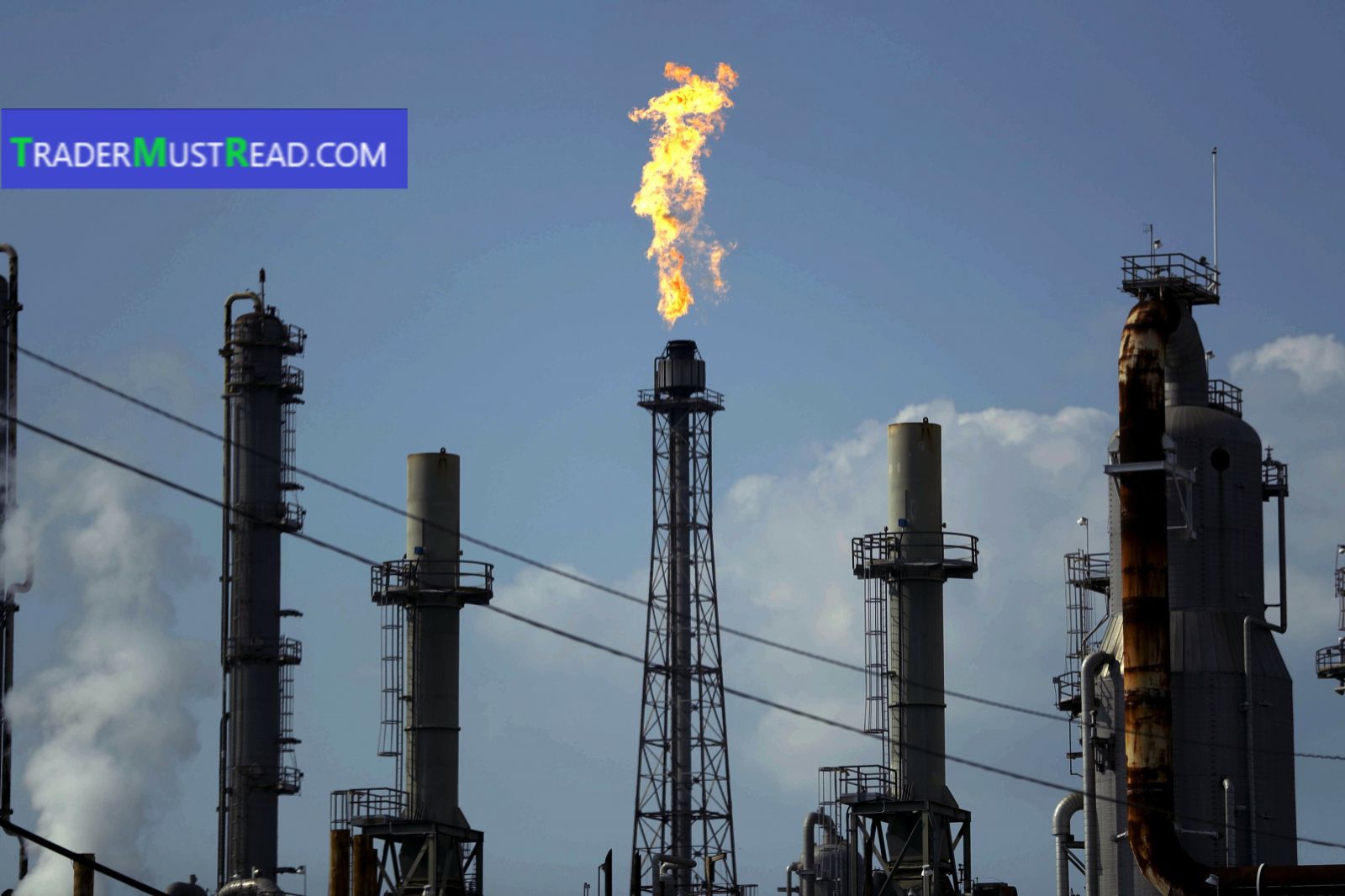On first principles it is not that surprising that the price of oil would be negative. We mean, look at it. It’s a viscous liquid. It smells bad. It is toxic. If you kept it in your garage, you might get sick, or you might get in trouble for storing pollutants improperly, or your garage might explode. If we walked up to you on the street and tried to give you a barrel of oil, you would naturally charge me for taking it off my hands. It is an all-around unpleasant substance.
But you can refine it into products that produce energy. So humanity got over the problems with oil long ago and, despite its unpleasantness, it has spent a century as the literal fuel of the world economy. It is gross bad stuff but we need it to drive cars and fly planes and move cargo and otherwise do all the things we like to do. Now we are not doing those things. The world economy is closed. Oil’s use value has collapsed. You are left with a viscous smelly toxic polluting inflammable useless ooze.

Not entirely useless, We mean—cargos and delivery trucks are still moving—but everything happens at the margin, and on Monday the “unpleasant ooze” factor significantly outweighed the “useful for powering the economy” one:
April 20, 2020 will go down in oil-market history as the day when the U.S. benchmark price for crude dropped below zero for the first time -- and then kept falling. In a massive and unprecedented swing, the future contracts for May delivery of West Texas Intermediate tumbled to minus $37.63 a barrel. The jaw-dropping development was in no small measure down to an extreme glitch in the way oil futures operate. But it also revealed a fundamental truth about the oil market in the age of coronavirus and the aftermath of a price war: The world’s most important commodity is quickly losing all value as chronic oversupply overwhelms the world’s crude tanks, pipelines and supertankers…
The lowest prices came in trades in futures -- contracts in which a buyer locks in a purchase at a stated price at a stated time. Futures are a tool for users of oil to hedge against price swings, but also a means of speculation. The contracts run for a set period, and traders who don’t want to unwind their position or take delivery generally roll over their monthly contracts shortly before expiration to a month further in the future. Contracts for May delivery were due to expire on April 21, putting maximum pressure the day before on traders whose contracts were coming due. For them, selling at a steeply negative price was better than taking delivery of actual oil because nobody needs it and there are fewer and fewer places to put it.
As we discussed couple of days ago, this is not quite a story of “the price of oil is negative”; it is more a story of “the price of physically settled front-month West Texas Intermediate oil futures is negative.” If you buy oil futures you might be a refiner or physical commodities trader planning, at the expiry of the futures contract, to take delivery of thousands of barrels of oil. But you might not be. You might just as well be a financial trader—a bank or a hedge fund or an oil exchange-traded fund—planning only to bet on the price of oil; when the May contract expired, you intended to sell it (and possibly buy the next, June contract to roll your bet). As the May expiry rolled around, all the financial buyers wanted out, but none of the refiners wanted any more oil—because, again, the world economy has stopped—and so the financial traders had to pay someone quite a bit of money to take the oil off their hands. Events in the real world caused this—the real actual lack of current demand for oil was the basic problem—but oddities of financial markets exacerbated it; what made the price negative thirty-seven dollars was less “drillers have produced too much oil and are rushing to get rid of it” and more “financial speculators have purchased too much virtual oil and are rushing not to actually get it.” Bloomberg News reported Monday:
The price on the futures contract for West Texas crude that is due to expire Tuesday fell into negative territory -- minus $37.63 a barrel. The reason: with the pandemic bringing the economy to a standstill, there is so much unused oil sloshing around that American energy companies have run out of room to store it. And if there’s no place to put the oil, no one wants a crude contract that is about to come due.
Underscoring just how acute the concern is over the lack of immediate storage space, the price on the futures contract due a month later settled at $20.43 per barrel. That gap between the two contracts is by far the biggest ever.
“The May crude oil contract is going out not with a whimper, but a primal scream,” said Daniel Yergin, a Pulitzer Prize-winning oil historian and vice chairman of IHS Markit Ltd.
Here we want to talk a bit more about the financial weirdness. Again, it is not that weird, on first principles, for the price of oil to be negative: It’s a gross ooze that is costly to store or dispose of, and no one is using it right now.
It is also not that weird, mechanically, for the futures price to be negative. It mean it is unprecedented, and it is weird financially; you’d expect an efficient market to figure out the storage problems more than one day ahead of expiry, and unwind contracts in a more orderly way. But mechanically the negative futures price is mostly straightforward and intuitive. Futures trade on an exchange, there is a clearinghouse, everyone has to be creditworthy and post daily margin both ways as the price moves. If the price goes down, money moves along well-understood channels from the long party to the short party; if the price goes down to negative $37.63, those channels keep working.

What is weird, mechanically, is that people have built financial products—often retail financial products—on top of oil futures, and those products implicitly assume that the lowest possible price for oil futures is zero. Basically you put oil futures in a box, you sell the box to investors, if oil prices go up the investors make money, if prices go down the investors lose money, if prices go to zero the investors lose all their money. Normal stuff.
But if prices go to negative $37.63, you are not prepared for that. Futures exchanges have all the good two-way margin posting to make it work fine, but your retail product doesn’t, and you are in trouble.
TraderMustRead ft. Matt Levine




















































